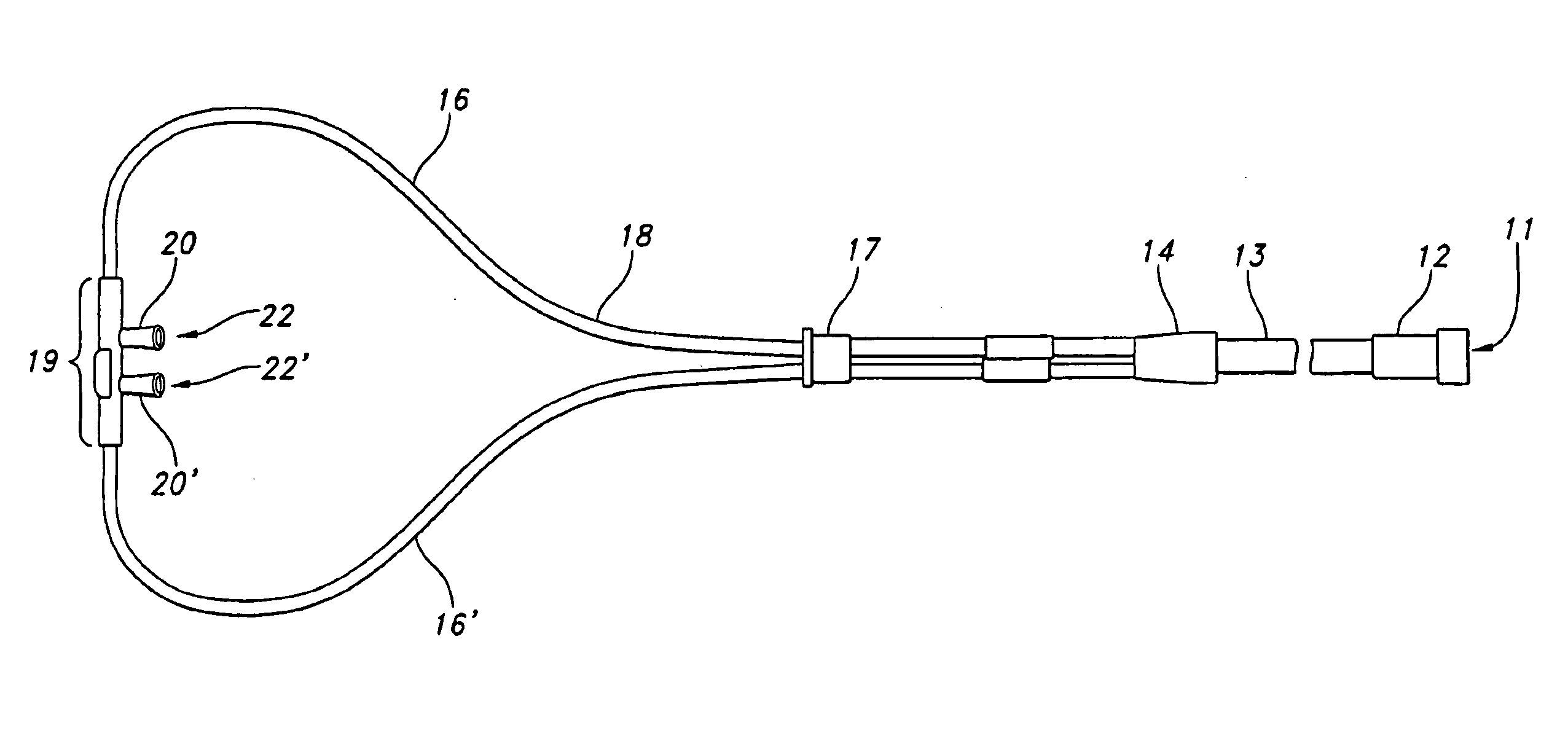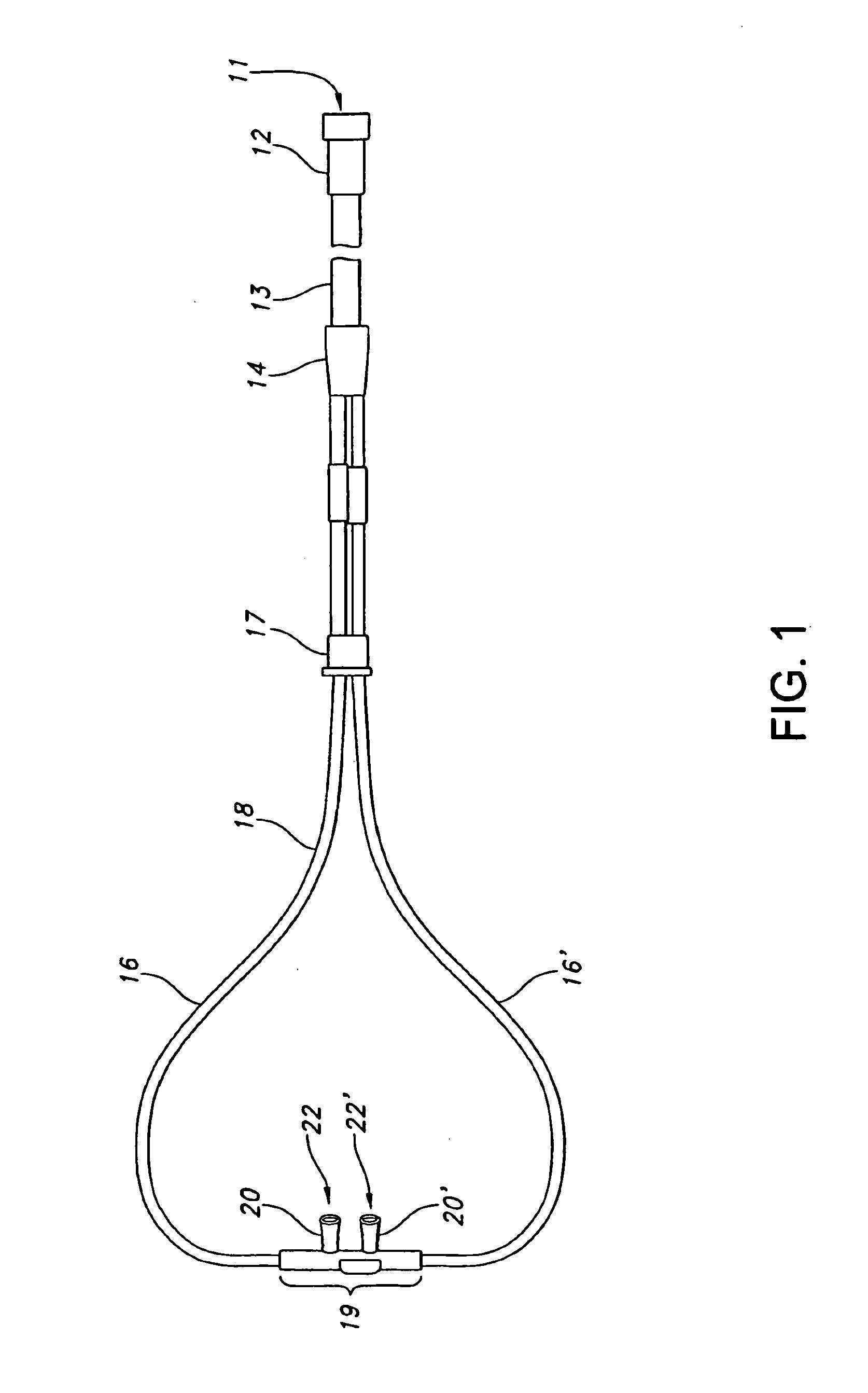Apparatus configured to reduce microbial infection and method of making the same
a technology of microbial infection and apparatus, applied in the direction of respirator, catheter, transportation and packaging, etc., can solve the problems of respiratory irritation, irritation at these points of contact, discomfort for patients, etc., and achieve the effect of maintaining the patency of the membrane and inhibiting the growth of bacteria
- Summary
- Abstract
- Description
- Claims
- Application Information
AI Technical Summary
Benefits of technology
Problems solved by technology
Method used
Image
Examples
Embodiment Construction
[0032]Although the invention is illustrated and described herein with reference to specific embodiments, the invention is not intended to be limited to the details shown. Rather, various modifications may be made in the details within the scope and range of equivalents of the claims and without departing from the invention. The invention is best understood from the following detailed description when read in connection with the accompanying drawing figures, which show exemplary embodiments of the invention selected for illustrative purposes. The invention will be illustrated with reference to the figures. Such figures are intended to be illustrative rather than limiting and are included herewith to facilitate the explanation of the present invention.
[0033]Exemplary embodiments of a nasal cannula according to this invention have been discovered to help overcome disadvantages that may be associated with a conventional nasal cannula. More specifically, embodiments of a nasal cannula de...
PUM
| Property | Measurement | Unit |
|---|---|---|
| Antimicrobial properties | aaaaa | aaaaa |
| Polymeric | aaaaa | aaaaa |
Abstract
Description
Claims
Application Information
 Login to View More
Login to View More - R&D
- Intellectual Property
- Life Sciences
- Materials
- Tech Scout
- Unparalleled Data Quality
- Higher Quality Content
- 60% Fewer Hallucinations
Browse by: Latest US Patents, China's latest patents, Technical Efficacy Thesaurus, Application Domain, Technology Topic, Popular Technical Reports.
© 2025 PatSnap. All rights reserved.Legal|Privacy policy|Modern Slavery Act Transparency Statement|Sitemap|About US| Contact US: help@patsnap.com



